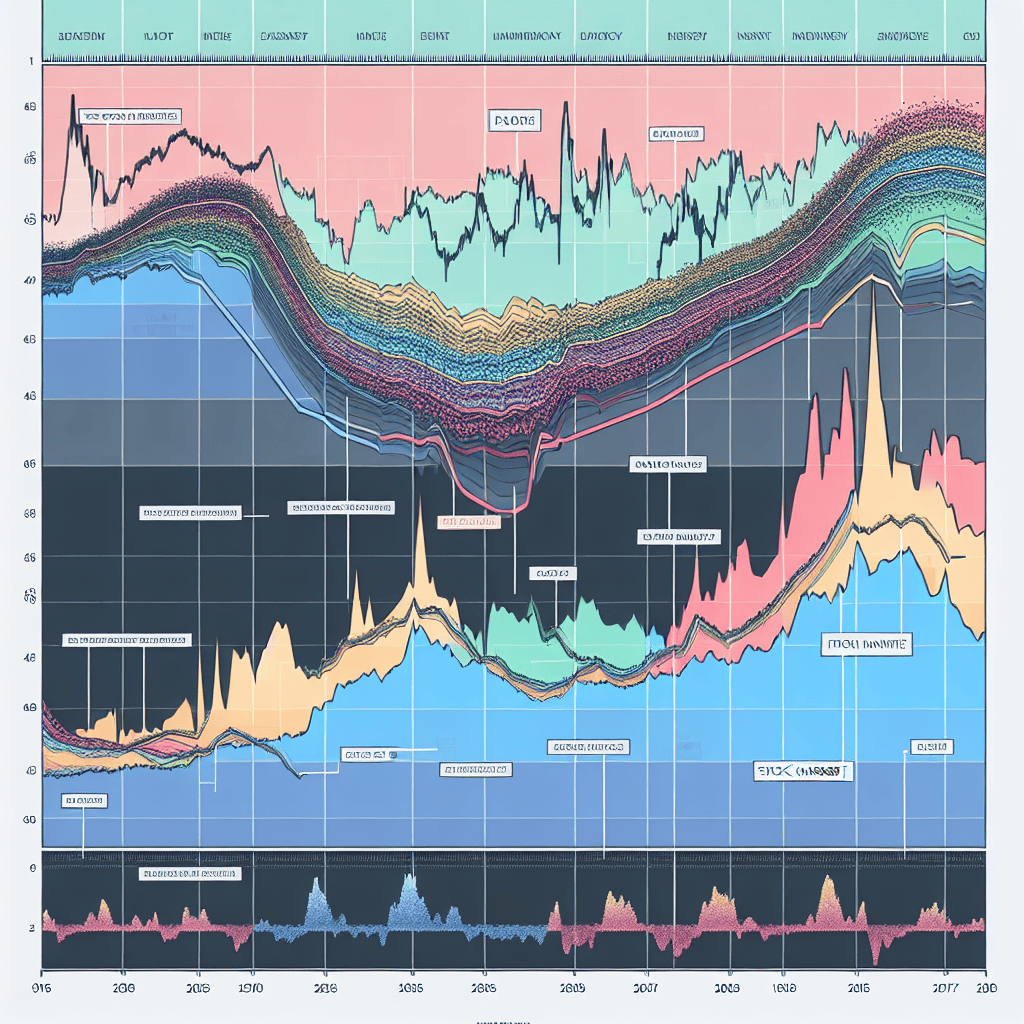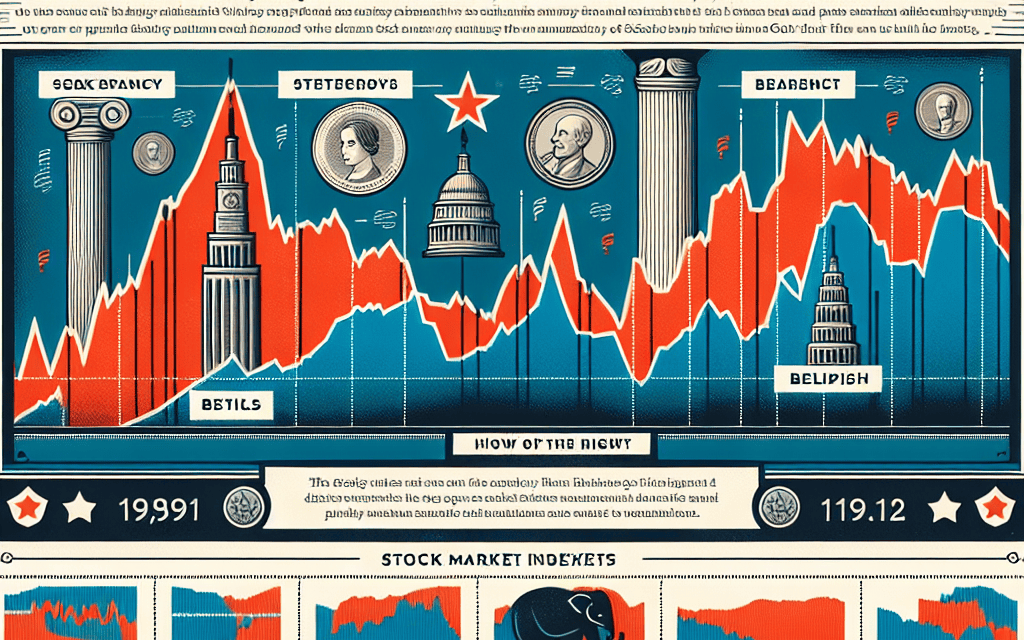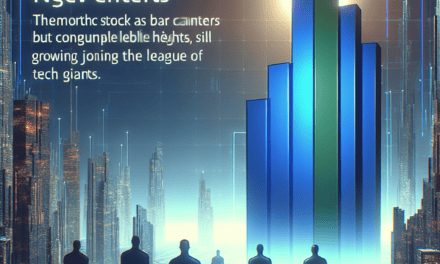“Unveiling the Market Pulse: GOP Senate Majority and Historical Stock Trends”
Introduction
Title: GOP Senate Majority: Historical Stock Market Trends Explored
Introduction:
The relationship between political power shifts and financial market performance has long been a subject of interest for economists, investors, and policymakers alike. In the United States, the composition of the Senate can significantly influence legislative priorities, regulatory environments, and economic policies, all of which have the potential to impact the stock market. Historically, periods when the Republican Party (GOP) has held a majority in the Senate have been marked by distinct economic and market trends. This exploration delves into the historical stock market performance during GOP Senate majorities, examining key legislative actions, economic policies, and external factors that have shaped market outcomes. By analyzing these trends, we aim to provide a nuanced understanding of how GOP Senate control has historically influenced investor sentiment and market dynamics.
Impact Of GOP Senate Majority On Stock Market Performance
The relationship between political shifts and stock market performance has long been a subject of interest for economists, investors, and policymakers alike. When examining the impact of a GOP Senate majority on stock market trends, it is essential to consider historical data and the broader economic context. Historically, the stock market’s performance under a Republican-controlled Senate has been influenced by various factors, including fiscal policies, regulatory changes, and investor sentiment.
To begin with, it is important to note that the stock market is influenced by a multitude of factors, and attributing its performance solely to the political composition of the Senate would be an oversimplification. However, historical trends do provide some insights. Generally, Republican majorities in the Senate have been associated with pro-business policies, such as tax cuts and deregulation, which are often perceived positively by investors. These policies can lead to increased corporate profits and, consequently, higher stock prices.
For instance, during the Reagan administration in the 1980s, a Republican-controlled Senate supported significant tax reforms and deregulation efforts. These measures were credited with stimulating economic growth and contributing to a bull market. Similarly, the early 2000s saw another period of Republican Senate control, during which tax cuts were implemented under President George W. Bush. This period also witnessed a rise in stock market indices, although it was followed by the financial crisis of 2008, which underscores the complexity of attributing market performance to political factors alone.
Moreover, investor sentiment plays a crucial role in stock market dynamics. A GOP Senate majority often signals to investors a likelihood of business-friendly policies, which can boost market confidence. This sentiment can lead to increased investment and stock market gains. However, it is also important to consider that market reactions can be influenced by expectations and not just actual policy implementations. Therefore, the anticipation of a Republican majority can sometimes have an immediate impact on market performance, even before any legislative changes occur.
In addition to domestic policies, global economic conditions and geopolitical events also significantly impact stock market performance. A GOP Senate majority may coincide with favorable or unfavorable global economic trends, which can either amplify or mitigate the effects of domestic policies. For example, during periods of global economic expansion, the positive impact of pro-business policies may be more pronounced, while during global downturns, these effects might be less evident.
Furthermore, it is crucial to recognize that the stock market is not a monolithic entity, and different sectors may respond differently to a GOP Senate majority. Industries such as energy, finance, and healthcare may benefit from deregulation and tax cuts, while others may face challenges due to shifts in trade policies or changes in government spending priorities.
In conclusion, while historical trends suggest that a GOP Senate majority can have a positive impact on stock market performance through pro-business policies and increased investor confidence, it is essential to consider the broader economic context and other influencing factors. The stock market’s response to political changes is complex and multifaceted, shaped by a combination of domestic policies, global economic conditions, and investor sentiment. As such, while a Republican-controlled Senate may create an environment conducive to market gains, it is only one of many factors that contribute to the intricate tapestry of stock market performance.
Historical Analysis: GOP Senate Majority And Economic Growth
The relationship between political control and economic performance has long been a subject of interest for economists, investors, and policymakers alike. In particular, the impact of a GOP Senate majority on the stock market has been a topic of considerable debate. Historically, the stock market’s performance under Republican leadership in the Senate has shown varied trends, influenced by a multitude of factors including economic policies, global events, and market sentiment. To understand these trends, it is essential to delve into the historical context and analyze the economic growth patterns during periods when the GOP held a majority in the Senate.
Historically, the Republican Party has been associated with policies that favor deregulation, tax cuts, and a pro-business environment. These policies are often perceived as conducive to economic growth, potentially leading to positive stock market performance. For instance, during the 1980s under President Ronald Reagan, a Republican Senate majority coincided with significant tax reforms and deregulation efforts. This period saw substantial economic expansion and a bullish stock market, often referred to as the “Reagan Boom.” The GOP’s emphasis on reducing government intervention in the economy was credited with fostering an environment that encouraged investment and innovation.
However, it is crucial to recognize that stock market performance is not solely determined by the party in power. External factors such as technological advancements, geopolitical tensions, and global economic conditions also play a significant role. For example, during the late 1990s, the stock market experienced a remarkable surge driven by the dot-com boom. Although the GOP held a Senate majority for part of this period, the technological revolution and investor enthusiasm for internet-based companies were primary drivers of market performance.
Moreover, the relationship between a GOP Senate majority and economic growth is not always straightforward. The 2000s provide a nuanced perspective, as the early part of the decade was marked by economic challenges despite Republican control of the Senate. The burst of the dot-com bubble, followed by the September 11 attacks, led to economic uncertainty and market volatility. While the GOP’s policies aimed at stimulating growth, external shocks underscored the complexity of attributing market trends solely to political leadership.
Transitioning to more recent history, the 2010s offer further insights into this dynamic. During this decade, the GOP regained control of the Senate in 2014, coinciding with a period of economic recovery following the Great Recession. The stock market experienced a prolonged bull run, supported by factors such as low interest rates and quantitative easing. While Republican policies, including corporate tax cuts in 2017, were seen as catalysts for economic growth, the broader global economic environment also played a pivotal role.
In conclusion, while historical analysis suggests that a GOP Senate majority can be associated with certain economic growth trends, it is imperative to consider the broader context. The stock market is influenced by a myriad of factors, and attributing its performance solely to political control oversimplifies a complex relationship. Investors and analysts must consider both domestic policies and global economic conditions when evaluating the potential impact of a GOP Senate majority on economic growth. As history has shown, the interplay between politics and economics is intricate, requiring a nuanced understanding of the forces at play.
Stock Market Volatility During GOP Senate Control
The relationship between political control and stock market performance has long been a subject of interest for economists, investors, and policymakers alike. When examining the historical trends of stock market volatility during periods of GOP Senate majority, it becomes evident that political dynamics can indeed influence market behavior, albeit in complex and multifaceted ways. Understanding these trends requires a nuanced exploration of the interplay between legislative priorities, economic policies, and investor sentiment.
Historically, the stock market has experienced varying degrees of volatility under different political regimes. During periods when the GOP holds the Senate majority, certain patterns emerge that can be attributed to the party’s economic policies and legislative agenda. Typically, the Republican Party is associated with pro-business policies, including tax cuts, deregulation, and a focus on free-market principles. These policies often aim to stimulate economic growth, which can lead to increased investor confidence and, consequently, a more robust stock market performance.
However, it is crucial to recognize that stock market volatility is not solely determined by the party in power. External factors such as global economic conditions, technological advancements, and geopolitical events also play significant roles. For instance, during the GOP Senate majority in the late 1990s, the stock market experienced substantial growth, driven in part by the tech boom and a strong global economy. Conversely, during the 2000s, despite Republican control, the market faced significant challenges due to the dot-com bubble burst and the financial crisis of 2008.
Moreover, the legislative process itself can contribute to market volatility. When the GOP holds the Senate majority, the potential for significant policy shifts can lead to uncertainty among investors. For example, debates over healthcare reform, tax legislation, and budgetary priorities can create fluctuations in market performance as investors react to anticipated changes in the economic landscape. This uncertainty can be exacerbated during periods of divided government, where legislative gridlock may hinder the passage of key economic policies, further influencing market volatility.
In addition to legislative factors, investor sentiment plays a critical role in shaping stock market trends. The perception of the GOP’s ability to implement its economic agenda can impact investor confidence. For instance, if investors believe that Republican policies will lead to economic growth and stability, they may be more inclined to invest, thereby driving up stock prices. Conversely, if there is skepticism about the effectiveness of these policies, or if there are concerns about potential negative impacts on certain sectors, market volatility may increase.
It is also important to consider the long-term implications of GOP Senate control on the stock market. While short-term volatility may be influenced by immediate policy changes and investor reactions, the long-term effects are often shaped by the broader economic environment and structural changes in the economy. For example, tax reforms and deregulation may have lasting impacts on corporate profitability and competitiveness, which can influence stock market performance over an extended period.
In conclusion, while the GOP Senate majority can influence stock market volatility through its economic policies and legislative agenda, it is only one of many factors that contribute to market dynamics. A comprehensive understanding of stock market trends requires consideration of both political and non-political influences, as well as an awareness of the complex interactions between these elements. By examining historical patterns and recognizing the multifaceted nature of market behavior, investors and policymakers can better navigate the challenges and opportunities presented by periods of GOP Senate control.
Comparing Stock Market Trends Under GOP And Democratic Senate Majorities

The relationship between political control and stock market performance has long been a subject of interest for economists, investors, and policymakers alike. As the United States Senate plays a crucial role in shaping fiscal policy, understanding how stock markets have historically responded to different party majorities can offer valuable insights. When examining the stock market trends under GOP and Democratic Senate majorities, it is essential to consider various factors that influence market dynamics, including economic conditions, global events, and legislative priorities.
Historically, the stock market has shown resilience and growth under both Republican and Democratic Senate majorities, though the nature and extent of this growth can vary. Under GOP Senate majorities, the stock market has often been associated with policies that favor deregulation, tax cuts, and business-friendly initiatives. These policies are generally perceived as conducive to corporate profitability, potentially leading to bullish market trends. For instance, during the 1980s under the Reagan administration, which enjoyed a Republican Senate majority for part of its tenure, significant tax reforms and deregulation efforts were implemented. These measures were credited with stimulating economic growth and contributing to a robust stock market performance.
Conversely, Democratic Senate majorities have typically focused on policies that emphasize social welfare, environmental regulations, and consumer protections. While these initiatives may not always align with immediate corporate interests, they can foster long-term economic stability and consumer confidence, which are vital for sustained market growth. The Clinton administration in the 1990s, which operated with a Democratic Senate majority for a portion of its term, witnessed a period of economic expansion and technological innovation that propelled the stock market to new heights. This era underscored the potential for market prosperity under Democratic leadership, driven by a combination of fiscal discipline and investment in emerging sectors.
It is important to note that stock market performance is not solely determined by the party in control of the Senate. External factors such as global economic conditions, technological advancements, and geopolitical events play significant roles in shaping market trends. For example, the financial crisis of 2008 and the subsequent recovery period saw fluctuations in market performance that were influenced by a complex interplay of domestic and international factors, rather than merely the political composition of the Senate.
Moreover, the interplay between the Senate and other branches of government, particularly the executive branch, can further complicate the relationship between political control and market outcomes. A divided government, where different parties control the Senate and the presidency, can lead to legislative gridlock, impacting investor sentiment and market volatility. Conversely, unified government control can facilitate the swift implementation of policy agendas, though the market’s response will depend on the perceived efficacy and impact of those policies.
In conclusion, while historical trends provide some insights into stock market performance under GOP and Democratic Senate majorities, it is crucial to approach these findings with a nuanced understanding of the myriad factors at play. Investors and analysts must consider the broader economic context, policy specifics, and external influences when evaluating potential market outcomes. Ultimately, the stock market’s response to political shifts is complex and multifaceted, reflecting a dynamic interplay between policy decisions and the ever-evolving global economic landscape.
GOP Senate Majority: A Catalyst For Bull Markets?
The relationship between political power shifts and stock market performance has long been a subject of interest for economists, investors, and policymakers alike. As the possibility of a GOP Senate majority looms, it is pertinent to explore historical stock market trends to understand whether such a political shift could act as a catalyst for bull markets. Historically, the stock market’s performance under different political regimes has been scrutinized to discern patterns that might inform future expectations. While the stock market is influenced by a myriad of factors, including economic indicators, global events, and investor sentiment, the political landscape undeniably plays a significant role.
When examining past instances of a GOP-controlled Senate, it is essential to consider the broader political context, including the party in control of the presidency and the House of Representatives. Historically, periods of Republican control in the Senate have often coincided with pro-business policies, such as tax cuts and deregulation, which are generally perceived as favorable by the stock market. For instance, during the Reagan administration in the 1980s, a Republican Senate majority worked in tandem with the executive branch to implement significant tax reforms and reduce regulatory burdens, contributing to a robust bull market.
Moreover, the stock market’s response to a GOP Senate majority can also be influenced by investor expectations regarding fiscal policy. Republican majorities are typically associated with a focus on reducing government spending and promoting free-market principles. These policies can lead to increased business confidence and investment, potentially driving stock prices higher. However, it is crucial to note that the stock market’s reaction is not always straightforward or immediate. Investors often anticipate policy changes and adjust their strategies accordingly, leading to fluctuations in market performance.
In addition to domestic policies, a GOP Senate majority may also impact international trade relations, which can have significant implications for the stock market. Republican leadership often emphasizes strengthening trade agreements and reducing trade barriers, which can benefit multinational corporations and, by extension, the stock market. However, geopolitical tensions and trade disputes can also arise, introducing volatility and uncertainty into the market.
While historical trends provide valuable insights, it is important to recognize that past performance is not always indicative of future results. The stock market is inherently unpredictable, and numerous external factors can influence its trajectory. For instance, technological advancements, demographic shifts, and global economic conditions can all play a role in shaping market outcomes, regardless of the political party in power.
Furthermore, the current economic landscape presents unique challenges and opportunities that may not have been present in previous periods of GOP Senate control. The ongoing recovery from the COVID-19 pandemic, coupled with concerns about inflation and supply chain disruptions, adds layers of complexity to the market’s response to political changes. Investors must remain vigilant and consider a wide range of factors when assessing the potential impact of a GOP Senate majority on the stock market.
In conclusion, while historical trends suggest that a GOP Senate majority could act as a catalyst for bull markets, it is essential to approach such predictions with caution. The interplay between political power and market performance is complex and multifaceted, requiring a nuanced understanding of both historical precedents and current economic conditions. As investors navigate this dynamic landscape, they must remain informed and adaptable, recognizing that the stock market’s future is shaped by an ever-evolving array of influences.
Sector-Specific Stock Market Trends Under GOP Senate Leadership
The relationship between political leadership and stock market performance has long been a subject of interest for economists, investors, and policymakers alike. When examining the historical trends of sector-specific stock market performance under GOP Senate leadership, it becomes evident that certain sectors tend to respond more favorably than others. This analysis provides insights into how political dynamics can influence market behavior, offering valuable information for investors seeking to align their portfolios with anticipated legislative priorities.
Historically, the Republican Party has been associated with policies that favor deregulation, tax cuts, and a pro-business environment. These policies often create a conducive atmosphere for certain sectors to thrive. For instance, the energy sector, particularly oil and gas, has traditionally benefited from GOP leadership. Republican policies often emphasize energy independence and reduced regulatory constraints, which can lead to increased exploration and production activities. Consequently, energy stocks have shown a tendency to perform well during periods of Republican control in the Senate.
Similarly, the financial sector often experiences positive momentum under GOP Senate leadership. The Republican agenda typically includes measures aimed at reducing regulatory burdens on financial institutions, which can enhance profitability and growth prospects for banks and other financial entities. The rollback of stringent regulations, such as those imposed by the Dodd-Frank Act, is often a priority, leading to increased investor confidence and a subsequent rise in financial sector stocks.
Moreover, the defense sector is another area that tends to see favorable trends under Republican Senate leadership. The GOP’s focus on national security and defense spending often results in increased budgets for defense contractors and related industries. This emphasis on military strength and preparedness can lead to a surge in defense stocks, as companies in this sector anticipate higher government contracts and revenue streams.
In addition to these sectors, the healthcare industry also presents an interesting case. While the GOP’s stance on healthcare can be complex, with efforts to repeal or modify the Affordable Care Act, certain segments within the healthcare sector, such as pharmaceuticals and biotechnology, may benefit from reduced regulatory oversight and favorable tax policies. These conditions can foster innovation and growth, leading to positive stock performance in these areas.
However, it is important to note that not all sectors experience uniform benefits under GOP Senate leadership. For instance, the renewable energy sector may face challenges due to the Republican focus on traditional energy sources. Policies that prioritize fossil fuels over renewable energy initiatives can create headwinds for companies in the solar, wind, and other clean energy industries. As a result, investors in these sectors may need to exercise caution and closely monitor policy developments.
In conclusion, the historical trends of sector-specific stock market performance under GOP Senate leadership reveal a pattern where certain industries, such as energy, financials, and defense, tend to benefit from Republican policies. These sectors often experience growth due to deregulation, increased government spending, and favorable tax conditions. However, it is crucial for investors to remain vigilant and consider the broader economic and political landscape, as market dynamics can be influenced by a multitude of factors beyond Senate leadership. By understanding these historical trends, investors can make more informed decisions and potentially capitalize on the opportunities presented by shifts in political power.
Long-Term Investment Strategies During GOP Senate Majorities
The relationship between political control and economic performance has long been a subject of interest for investors seeking to optimize their long-term strategies. Historically, the stock market’s performance during periods when the Republican Party holds a majority in the U.S. Senate has been a topic of considerable analysis. Understanding these trends can provide valuable insights for investors aiming to align their portfolios with potential market movements influenced by political shifts.
To begin with, it is essential to recognize that the stock market is influenced by a myriad of factors, including economic policies, global events, and investor sentiment. However, political control can play a significant role in shaping the economic landscape. When the GOP holds a Senate majority, there is often a focus on policies that favor deregulation, tax cuts, and business-friendly initiatives. These policies can create an environment conducive to economic growth, potentially leading to positive stock market performance.
Historically, periods of GOP Senate majorities have coincided with notable stock market trends. For instance, during the 1980s under President Ronald Reagan, the Republican-controlled Senate implemented significant tax reforms and deregulation efforts. These measures were credited with stimulating economic growth and contributing to a bull market that saw substantial gains in stock prices. Similarly, in the early 2000s, the GOP majority in the Senate supported tax cuts and pro-business policies under President George W. Bush, which also coincided with periods of market growth, despite the challenges posed by the early 2000s recession and the aftermath of the dot-com bubble.
Nevertheless, it is crucial to approach these historical trends with a nuanced perspective. While GOP Senate majorities have often been associated with favorable market conditions, they are not the sole determinants of stock market performance. Economic cycles, technological advancements, and international developments also play pivotal roles. Moreover, the impact of GOP policies can vary depending on the broader economic context and the specific legislative agenda pursued during their tenure.
For long-term investors, understanding these historical trends can inform strategic decisions. During periods of GOP Senate majorities, investors might consider focusing on sectors that traditionally benefit from Republican policies, such as energy, financial services, and defense. These industries often experience regulatory relief and increased government spending, which can enhance their profitability and, consequently, their stock performance.
Furthermore, diversification remains a fundamental principle of long-term investment strategies. While political trends can offer guidance, a well-diversified portfolio that spans various sectors and asset classes can help mitigate risks associated with political and economic uncertainties. By balancing investments across different industries and geographies, investors can better position themselves to weather market fluctuations and capitalize on growth opportunities.
In conclusion, while historical stock market trends during GOP Senate majorities provide valuable insights, they should be considered as part of a broader investment strategy. Political control is just one of many factors influencing market dynamics, and investors should remain vigilant in assessing the evolving economic landscape. By combining historical analysis with a diversified approach, investors can develop robust long-term strategies that align with their financial goals and risk tolerance. As always, consulting with financial advisors and staying informed about current events will further enhance the ability to make informed investment decisions in any political climate.
Q&A
1. **Question:** How has the stock market historically performed under a GOP Senate majority?
**Answer:** Historically, the stock market has shown mixed performance under a GOP Senate majority, with some periods of strong growth and others of volatility, often influenced by broader economic conditions and policies.
2. **Question:** What are some notable years when the GOP held the Senate majority and the stock market performed well?
**Answer:** Notable years include the mid-1990s and early 2000s, where the GOP held the Senate majority and the stock market experienced significant growth, partly due to the tech boom and economic expansion.
3. **Question:** How did the stock market react to the GOP gaining Senate majority in the 2014 midterm elections?
**Answer:** Following the 2014 midterm elections, when the GOP gained Senate majority, the stock market initially reacted positively, with investors optimistic about potential pro-business policies and tax reforms.
4. **Question:** Are there any specific sectors that tend to perform better under a GOP Senate majority?
**Answer:** Sectors such as energy, defense, and financials often perform better under a GOP Senate majority due to typically favorable regulatory and tax policies.
5. **Question:** How does investor sentiment typically change with a shift to a GOP Senate majority?
**Answer:** Investor sentiment often becomes more optimistic with a shift to a GOP Senate majority, anticipating business-friendly policies, although this can vary based on the broader economic context.
6. **Question:** What impact does a GOP Senate majority have on fiscal policy and its influence on the stock market?
**Answer:** A GOP Senate majority often leads to fiscal policies favoring tax cuts and reduced regulation, which can boost corporate profits and investor confidence, positively impacting the stock market.
7. **Question:** Can historical stock market trends under a GOP Senate majority predict future performance?
**Answer:** While historical trends provide insights, they cannot reliably predict future performance due to the influence of numerous variables, including global economic conditions, technological advancements, and unforeseen events.
Conclusion
The exploration of historical stock market trends during periods of GOP Senate majority reveals a complex relationship between political control and market performance. While some data suggest that markets may respond positively to Republican economic policies, such as tax cuts and deregulation, which are often associated with GOP leadership, the overall impact is influenced by a multitude of factors including global economic conditions, technological advancements, and geopolitical events. Historically, the stock market has shown resilience and growth under both Republican and Democratic leadership, indicating that while political control can influence market sentiment and policy direction, it is not the sole determinant of market performance. Therefore, investors should consider a broad range of economic indicators and trends rather than relying solely on political majority as a predictor of market outcomes.





